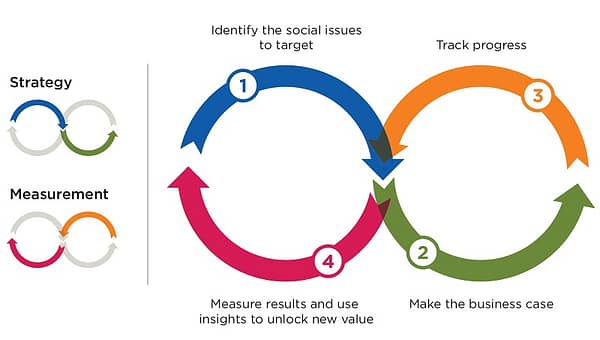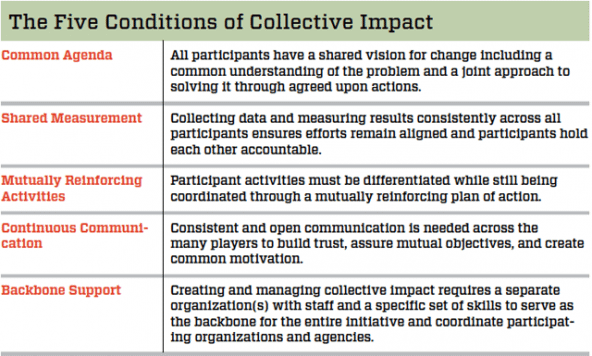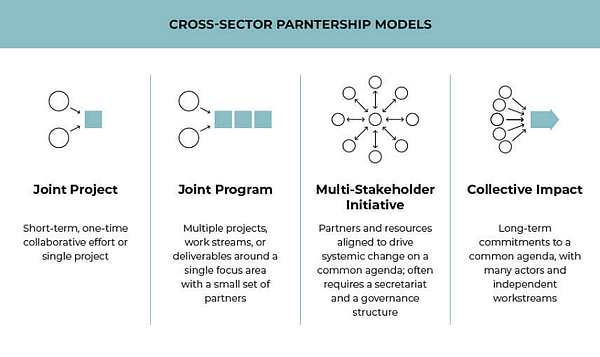7 Leading Social Impact Frameworks to Add to Your Toolkit
@tags:: #lit✍/📰️article/highlights
@links::
@ref:: 7 Leading Social Impact Frameworks to Add to Your Toolkit
@author:: blog.movingworlds.org
2023-07-01 blog.movingworlds.org - 7 Leading Social Impact Frameworks to Add to Your Toolkit

Reference
Notes
With a systems map in place, you’ll next want to focus on creating shared value. While systems mapping asks the question “who are the key players and how do they relate to each other?”, shared value asks “how can we work together to make sure that all core entities are getting value out of this partnership?”
- No location available
-
partnerships with social enterprises will only sustain if they create value for all of the key stakeholders – including the social enterprise itself, its beneficiaries, the surrounding regulatory bodies, other social impact actors in the space, and your company.
- No location available
-
(highlight:: According to FSG’s measurement method, an integrated shared value strategy and measurement process includes these 4 steps:
Identifying the social issue(s) to targetMaking the business caseTracking progressMeasuring results and using insights to unlock new value)
- No location available
-
- [note:: ]
]
As you can see in the diagram above (published by Rank & File, a logic model like the ToC starts with inputs, and then carries through to impact:
Inputs: These are the basic resources that you need to make your day-to-day activities possible, like people, tools, and of course the money.Activities: Next comes the things that you do with those resources – known as activities – which include things like creating, selling, and delivering your offering.Outputs: Those activities then result in outputs, which are typically tangible metrics like number of people reached or number of products sold.Outcomes: The changes that result from those outputs are called outcomes, and include things like the positive results observed for the people you’re serving, or effects on the broader social problem you’re trying to solve.Impact: Finally, those outcomes translate into the ultimate impact you want to have in terms of the problem you’re solving for the people you’re serving.)
- No location available
-
HCD tells us that solutions to even the most intractable problems – like poverty, disease and gender inequality – exist in the people and communities who are experiencing them directly. The HCD framework helps us better partner with these very people to help bring solutions to life that make a meaningful difference in their lives and the broader world.
- No location available
-
- [note::HCD = Human Centered Design]
One way to think of HCD is as a process that overlays Design Thinking by dividing it into three distinct stages: inspiration, ideation, and implementation. At MovingWorlds, we call this combination “Social Enterprise Thinking.”
- No location available
-
(highlight:: Particularly when you’re bringing together actors from different sectors and backgrounds, a foundation of trust is critical to growth. Network leadership helps us build that foundation by:
Focusing on the mission before the organizationManaging through trust, rather than controlPromoting others, not yourselfBuilding constellations, not stars)
- No location available
-
(highlight:: There are five conditions that must be met to achieve collective impact:

The first is a common agenda. Similar to the network leadership concept of clarifying purpose, this ensures that all participants have a common vision to collectively use their resources to work towards. The second is a shared measurement framework – you want to establish how you’ll measure progress and success at the outset to make sure you’re comparing apples to apples and speaking the same ‘language.’ The third is mutually reinforcing activities, in which each partner can leverage their unique strengths and assets in a complimentary way. The fourth is continuous communication, which is an important part of maintaining trust and staying aligned around a common motivation. Finally, there’s backbone support, which involves bringing in a separate partner or organization to serve as the ‘backbone’ of the entire initiative and coordinate activities amongst the other partners.)
- No location available
-
(highlight:: As you embark on any project, defining the partnership structure in place will help you think about how to best use the other frameworks to collaborate:

The simplest structure is a joint project, which is a good option for short-term, one-time initiatives or deliverables. For more complex initiatives with multiple projects, work streams, or deliverables, a joint program structure is a good option to coordinate a small set of partners around a single focus area. Multi-stakeholder initiatives are a good choice for aligning partners and resources to drive systemic change according to a common agenda, and involves putting a separate governance structure into place. Finally, you have collective impact, which is a good fit for long-term commitments to a common agenda with many partners and independent work streams.)
- No location available
-
- [note:: ]
]